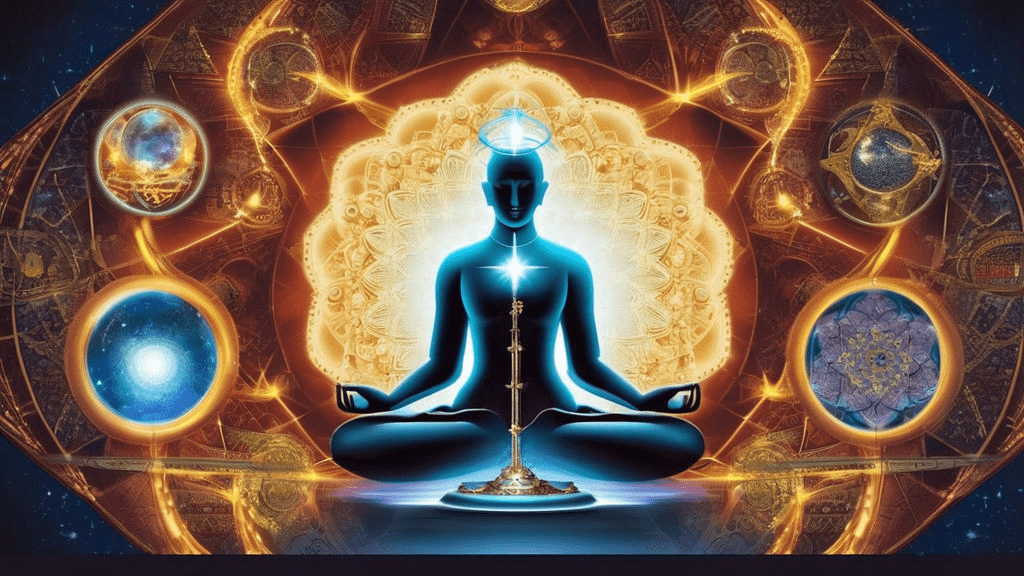Introduction
The interplay between science and religion has long been a topic of debate, influencing societal norms and shaping cultural beliefs. While science is rooted in empirical evidence and rational thinking, religion often draws from faith and spiritual beliefs.
The impact of science on society is undeniable, driving technological advancements, medical breakthroughs, and shaping our understanding of the world. However, religious beliefs continue to hold significant influence over moral codes, traditions, and societal values.
Exploring the dichotomy between science and religion offers a nuanced perspective on how these two forces interact to shape societal norms. It prompts us to consider how we navigate the complexities of modern life while respecting diverse belief systems that contribute to the fabric of our communities.
The interplay between science and religion is a complex and enduring debate that significantly influences societal norms and cultural beliefs. While science relies on empirical evidence and rational thinking, religion draws from faith and spiritual beliefs, each playing a distinct role in shaping our understanding of the world. Science drives technological advancements and medical breakthroughs, while religious beliefs continue to influence moral codes, traditions, and societal values.
Exploring this dichotomy offers a nuanced perspective on how these forces interact to shape societal norms, prompting us to navigate modern complexities while respecting diverse belief systems that enrich our communities. In essence, the dynamic relationship between science and religion underscores the importance of embracing diversity in thought for a harmonious coexistence in society.
The Scientific Method: A Pillar of Progress or a Threat to Religious Beliefs?
The scientific method serves as a foundational framework for advancing knowledge and understanding in the realm of science. It emphasizes continuous inquiry, rigorous experimentation, and the critical evaluation of theories based on empirical evidence. By encouraging a systematic approach to investigation and discovery, the scientific method has been instrumental in driving scientific progress and innovation. While some individuals may view the application of the scientific method as a potential challenge to certain religious beliefs or ideologies, it is important to recognize that science and religion can coexist harmoniously.
Many people find that science enhances their understanding of the natural world, while their religious beliefs provide guidance on moral and existential questions. Ultimately, whether viewed as a pillar of progress or perceived as a threat to religious beliefs, the scientific method remains an invaluable tool for expanding our knowledge and pushing the boundaries of human understanding. Its emphasis on evidence-based reasoning and continual refinement of theories has paved the way for countless discoveries that have transformed our world.
The scientific method stands as a cornerstone of progress in science, promoting thorough investigation and empirical evaluation to drive innovation. While some may perceive it as conflicting with religious beliefs, it is possible for science and religion to coexist harmoniously, each offering unique perspectives on the world. By emphasizing evidence-based reasoning and continual refinement of theories, the scientific method has led to transformative discoveries that push the boundaries of human understanding. Its systematic approach has been instrumental in advancing knowledge and shaping our world, demonstrating its enduring value in expanding our understanding of the natural world.
Religion’s Influence on Society: Tradition, Morality, and Cultural Identity
Religion plays a significant role in shaping society by influencing tradition, morality, and cultural identity. Religious values often serve as the foundation for societal norms and beliefs, providing a moral compass for individuals and communities to navigate ethical dilemmas. The role of religion in culture is profound, as it helps to define the collective identity of a group of people. Religious teachings provide guidelines on how to interact with others, make decisions, and lead a meaningful life.
This shared set of beliefs fosters a sense of belonging and unity among followers. Moreover, religious traditions and customs are essential aspects of cultural heritage that are passed down through generations. They help maintain continuity with the past while also adapting to contemporary contexts. These rituals strengthen social bonds within communities and offer opportunities for reflection and spiritual growth. In conclusion, religion’s influence on society is multifaceted, encompassing tradition, morality, and cultural identity. By upholding religious values, honoring traditions, and embracing moral teachings, individuals can contribute to creating a more harmonious and cohesive community.
In conclusion, religion’s impact on society is profound and multifaceted, shaping tradition, morality, and cultural identity. Through providing a moral compass and guiding societal norms, religious values play a crucial role in fostering unity and belonging among individuals and communities. The deep-rooted traditions and customs passed down through generations not only connect people to their past but also help them adapt to contemporary challenges. By upholding religious teachings and embracing cultural heritage, individuals can contribute to building a more harmonious and cohesive community that values reflection, spiritual growth, and social bonds.
The Intersecting Paths: Instances Where Science and Religion Coexist
The coexistence of science and religion has been a topic of interest for many, and there are instances where they harmoniously intersect. One example is the acceptance of the Big Bang theory by some religious groups as compatible with the idea of a creator initiating the universe. Another example is the work of scientists who see their research as a way to uncover the wonders of creation, thus blending scientific inquiry with spiritual awe. By exploring these intersections, we can appreciate how science and faith beliefs can coexist in harmony, each offering valuable insights into our understanding of the world.
In conclusion, the harmonious intersection of science and religion is evident through examples like the acceptance of the Big Bang theory by certain religious groups and scientists viewing their research as a means to uncover the wonders of creation. These instances showcase how both realms can coexist in harmony, providing valuable insights into our understanding of the world. By exploring these intersections, we gain a deeper appreciation for how science and faith beliefs complement each other in offering different perspectives on our existence.
Navigating Controversies: Addressing Conflicts Between Scientific Discoveries and Religious Dogma
When it comes to navigating controversies between scientific discoveries and religious beliefs, it’s important to approach the topic with an open mind and a willingness to engage in respectful dialogue. One classic example of conflict is the debate between evolution and creationism. While science supports the theory of evolution based on empirical evidence, some religious beliefs hold that all living organisms were created by a divine being.
In addressing such conflicts, it can be helpful to recognize that both science and religion offer valuable perspectives on the world around us. Finding common ground and understanding that they can coexist without necessarily contradicting each other is key. Controversies in the interaction between science and religion are not uncommon, but fostering conversations that promote understanding and respect for differing viewpoints can lead to greater harmony between these seemingly opposing realms of knowledge.
In navigating controversies between scientific discoveries and religious beliefs, it is crucial to approach the topic with an open mind and engage in respectful dialogue. The debate between evolution and creationism exemplifies this conflict, with science supporting evolution based on empirical evidence while some religious beliefs advocate for divine creation. Recognizing the value of both science and religion’s perspectives can help in addressing such conflicts, emphasizing that they can coexist without necessarily contradicting each other. While controversies may arise, fostering conversations that promote understanding and respect for differing viewpoints can lead to greater harmony between these seemingly opposing realms of knowledge.
II. Main Points
- Science is constantly evolving as new discoveries are made. Scientific knowledge today looks very different than it did 100 or even 50 years ago. Religion does not undergo the same rapid changes. Core religious doctrines and texts remain largely fixed over time.
- New scientific theories often contradict religious teachings that were developed centuries or millennia ago. For example, Darwin’s theory of evolution challenged the Biblical creation story. Some religions adapt to accommodate new scientific realities, while others reject contradicting scientific claims.
- Science focuses on natural explanations for phenomena while religion incorporates supernatural or metaphysical explanations. For example, science strives to understand mental illness in terms of brain chemistry while religion may emphasize spiritual factors.
- Science relies on empirical evidence that is quantifiable and reproducible. Religion often derives authority from faith in scriptures and personal spiritual experiences, which do not meet the rigors of scientific evidence.
- Science is viewed as objective, value-free inquiry while religion is faith-based and infused with moral values. This makes them fundamentally different paradigms for understanding the world.
III. Counterarguments
- Some argue that science and religion ask different questions and therefore do not need to conflict. Science asks “how” while religion asks “why”. The two can complement rather than contradict each other.
- Religions do evolve over time, just at a much slower pace than rapid scientific advances. Religious doctrines are reinterpreted in light of new realities. So the dichotomy between static religion and dynamic science is overstated.
IV. Conclusion
- The core principles and methods of science and religion remain distinct. Ongoing dialogue and compromise are needed for the two spheres to coexist peacefully. Ultimately, science and religion offer complementary lenses for understanding our lives and the world we inhabit.
- In conclusion, the harmony of science and religion is not just a theoretical concept but a realistic approach that can lead to a balanced and progressive society. By embracing the duality of these two domains, we can fuse the tangible scientific truths with the moral and ethical insights embedded in religious doctrines. This ongoing discussion unravels a new paradigm in which science and religion are not adversaries but cooperative players in the grand scheme of human evolution. Hence, recognizing their complementary roles becomes the cornerstone for fostering understanding, respect, and unity among diverse societies. As we venture further into this exploration, we get one step closer to designing a world where science marvels at religion’s depths, and religion respects the breadth of science.
- This integration of science and religion can also provide a more comprehensive understanding of the world around us. By acknowledging and utilizing both scientific and religious perspectives, we can gain a deeper insight into the complexities of our existence. Furthermore, this integration can also lead to new discoveries and advancements in various fields, as well as a better understanding of our place in the universe.
- Moreover, the harmony of science and religion can also have a positive impact on society. By promoting mutual understanding and respect between the two domains, we can create a more tolerant and inclusive environment for individuals with different beliefs. This can ultimately lead to a more peaceful coexistence among diverse communities.
Science Versus Religion: An Age-Old Debate
The relationship between science and religion has been a tumultuous one across the ages. These two titans often stand diametrically opposed on topics ranging from the origins of life to the basis of morality. As our scientific knowledge expands, the tensions and conflicts between science and religion only seem to grow.
Science relies on continuous inquiry, testing of hypotheses, and revision of theories based on new evidence. It is a dynamic process of accumulating knowledge about the natural world through empirical investigation and experimentation. Religion, in contrast, looks to ancient scriptures and enduring personal experiences to provide a framework for not just understanding the world, but also prescribing moral codes to live by.
Throughout history, scientific discoveries have frequently contradicted established religious doctrines, creating a culture clash between the two. When Darwin proposed his groundbreaking theory of evolution, it directly challenged the story of divine creation described in the Bible and other religious texts. The Copernican model of the solar system similarly drew the ire of religious authorities by displacing Earth from the center of the cosmic order. These are but two iconic examples among many ideological battles between science and religion.
Beyond conflicting origin stories, science and religion also offer utterly different explanatory frameworks. Science seeks natural, mechanistic explanations for phenomena we observe. If someone becomes ill, science looks to pathogens, genetics, and physiology to unlock the mystery of disease. Religion, on the other hand, incorporates supernatural forces and metaphysical causes to make sense of events. Illness may be attributed to curses, divine punishment, or demonic possession within a religious context. This divergence is perhaps most acutely seen in mental illness, which science studies through neurochemistry and psychology while religion emphasizes spiritual possession.
At its core, science relies on evidence that is quantifiable, reproducible, and verifiable through rigorous testing. It strives for objectivity by eliminating personal biases. Religion operates on a very different evidentiary basis, grounded in faith, divine inspiration, and subjective spiritual experiences that cannot be empirically validated. Religious doctrines derive authority from their historicity and the faith of adherents, not because they have been proven true through scientific methods.
Science is also an amoral enterprise, seeking knowledge without concern for how that knowledge affects ethics or values. Religion is inherently infused with moral imperatives, prescribing behaviors and social codes that reflect the values of faith communities. Science cannot tell us right from wrong, but religion expressly guides followers on moral issues. This makes science and religion fundamentally different paradigms for engaging with the world.
Of course, the dichotomy is not absolute. Many argue that science and religion ask different questions, and therefore need not always conflict. Science asks “how” the world works while religion asks “why” we are here and how we should live. The two spheres can complement more than contradict each other. Religions have also evolved over centuries to accommodate scientific truths, albeit at a much slower pace than scientific progress. While tensions persist, the domains are not completely incommensurable.
Ultimately, science and religion offer distinct lenses through which to understand ourselves and the world around us. Neither paradigm has an exclusive claim on truth or knowledge. With ongoing dialogue and mutual appreciation for what each sphere contributes, science and religion can coexist peacefully despite their substantive differences in principles and methodologies. But we should have no illusions that the underlying culture clash between scientific empiricism and faith will dissolve anytime soon.



